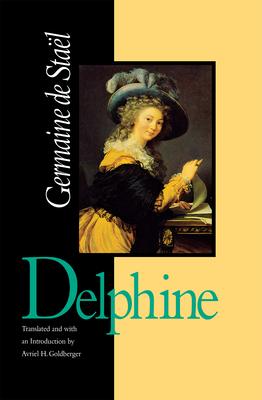Germaine de Staël's first major novel, Delphine, published in 1802, is a profound commentary on the status of women during a critical period of French political history. Delphine's eighteenth-century conventional form as an epistolary novel masks its unconventional questioning of accepted values and norms.
From the start, the Napoleonic government understood that Delphine was more than just a tale of tragic love. Though Staël disclaimed any intention of writing a political novel, the subversive aspects of a book dedicated to "The France of Silence" were not lost on Bonaparte, who prompty exiled the author from Paris. Perhaps most unacceptable to Napoleon was Staël's assertion of the rights of the individual, particularly those of women. The novel is especially important for its presentation of the plight of women at the end of the eighteenth century.
This translation of Delphine is based on the authoritative critical French edition prepared by Simone Balayé. Goldberger's introduction places the novel in the context of Staël's work and the thought of the times.

Germaine de Staël's first major novel, Delphine, published in 1802, is a profound commentary on the status of women during a critical period of French political history. Delphine's eighteenth-century conventional form as an epistolary novel masks its unconventional questioning of accepted values and norms.
From the start, the Napoleonic government understood that Delphine was more than just a tale of tragic love. Though Staël disclaimed any intention of writing a political novel, the subversive aspects of a book dedicated to "The France of Silence" were not lost on Bonaparte, who prompty exiled the author from Paris. Perhaps most unacceptable to Napoleon was Staël's assertion of the rights of the individual, particularly those of women. The novel is especially important for its presentation of the plight of women at the end of the eighteenth century.
This translation of Delphine is based on the authoritative critical French edition prepared by Simone Balayé. Goldberger's introduction places the novel in the context of Staël's work and the thought of the times.